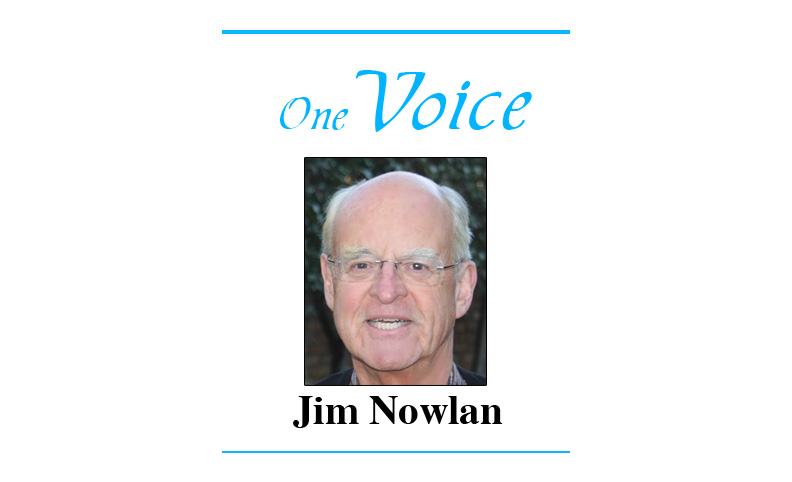
Household incomes in the United States have become more unequal over recent decades, as measured by the Gini Index of Inequality. American society has become more sharply polarized, as measured by Donald Trump’s continuing, intense support in small town and rural America. I know why, or at least know some of the key factors.
From my perch in rural Illinois since just after World War II, I have seen the causes at play: Women now work, at any jobs they can achieve, and like kinds marry; unions are often shadows of their former strength and numbers, and single-parent households have tripled since my childhood, to about 30% of all.
Growing up in the 1940-1950s, I recall that most married women stayed at home, and single women worked in limited fields until they married. Indeed, school boards required female teachers to stop teaching when they wed, to open a job for a man. Obviously, all is dramatically different today. I illustrate with two families, composites of many households I have known personally.
Post World War II, Dr. Sam Smith, the local family doctor, and his family lived on the same block as Joe Jones and his brood. Doc Smith had a good income. His wife Sally, an RN, stayed at home with their children. Joe Jones worked on the line at CAT in Peoria, a good UAW job. His wife Joan stayed at home with the children.
The ratio of the doc’s income to that of the CAT worker was about 2- or 3-1. Both solidly middle-class families back then. Sam and Joe were in the local Lions Club; they coached each other’s kids in little league baseball.. Sally and Joan were active in the American Legion Auxiliary.
Fast forward to the present. Dr. Smith’s granddaughter, Susan, is an MD. She married, not unsurprisingly, an MD. Their income is, say, half a million annually. One-time CAT worker Joe’s grandson, Bob, has little access to good union jobs. The crawler company has moved most of its jobs out of Illinois, to the non-union South, and the jobs aren’t as good as they once were, anyway. So, Bob now works at the local hog slaughtering plant, making around $35,000 a year. Of necessity, his wife Emily works at Walmart, making, say, $15,000 a year.
Now, the ratio of the medical family income to the worker stiffs is probably 10-1. The doctor-doctor couple are long gone from their grandparents’ small town, living far away in a leafy suburb or gated community. Bob and Emily are still in the small town, and depending on their cultural values, live in either a neat bungalow, or a sloppy small house with two rundown pickups in their yard. The twain of the doctor-working stiff families today shall never meet. And unfortunately, there are no young docs or other professionals left in the small town to strengthen the community leadership pool.
Bob is honked off about the situation. He sees on TV what the wealthy have. It doesn’t seem fair. He backs Trump.
But there is worse, such as the single-parent household, headed by often ill-educated mother Marilyn (father has been absent since conception). Marilyn lives in a trailer on the edge of the small town, or in a low-income, federally-subsidized apartment building, with lots of other single-mother households.
On either minimum-wage work or a panoply of welfare programs, Marilyn receives about $15,000-20,000 per year in income or benefits. Thus, the income of the gated-community docs to Marilyn is about 30-1! But kids of the single mom still want the same Nike sneakers as the docs’ children.
Trying to handle a rambunctious family on her own, Marilyn is hyper-stressed. Any resilience she may have had is about shot, because she lacks the strong support network the better off tend to have. Marilyn is so far behind in the race for stability and comfort that she is thinking about giving up, maybe already has, to a life of welfare, drugs, and alcohol.
What to do, to build stronger families in the struggling middle and at the bottom, and to reduce inequality?
Democrats favor replacing the income provided by a second person in the household in my youth with a range of government programs, which runs the risk of increasing long-term dependence on Uncle Sam. Republicans say more education is the answer. I propose incentive-driven, stair steps of increased government support in return for increased efforts in the household at better parenting and more education and skill development.
Women work today, and at whatever jobs they qualify for, and they marry like kinds, if they marry. Nothing wrong with any of that. Yet, it has consequences with which we need to grapple.
Jim Nowlan is a former senior aide to three unindicted Illinois governors, Republican state legislator, weekly newspaper publisher, and professor. He lives in central Illinois.

